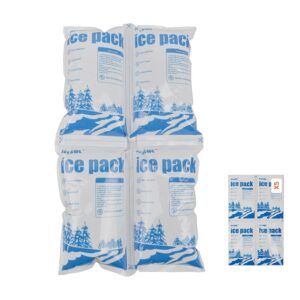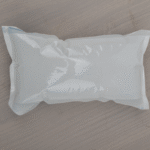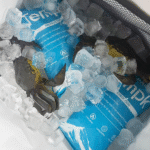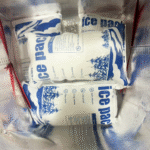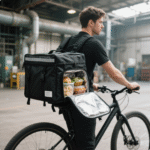Mis à jour: Août 18, 2025
Dry ice pellets in pack sizes are your fastest lever to hit target hold times and pass audits. Dans le premier 50 words: dry ice pellets in pack sizes should be matched to lane duration, payload sensitivity, and the latest carrier rules. Plan on 5–10 lb per 24 heures, choose pellet diameter for speed vs. endurance, and always label UN1845 with vented packaging.
-
Comment dry ice pellets in pack sizes map to 24–72 hour lanes with long‑tail planning keywords
-
How to calculate how much dry ice per 24 heures with a copy‑paste formula and chooser
-
What the UN1845 dry ice labeling et 2025 air/mail limits require in practice
-
Quand 3 mm vs 10–16 mm pellets change tenir le temps and venting needs
-
Where to source dry ice pellets in pack sizes depuis 10 lb bags to 1,400 lb totes
Which dry ice pellets in pack sizes fit your lane best?
Réponse courte: Choose dry ice pellets in pack sizes by lane clock first, then pellet diameter. Small pellets chill fastest but fade sooner; larger pellets last longer at the same weight. Use 5–10 lb per 24 hours as your baseline and add one extra day of buffer for delays. This aligns with 2025 carrier planning guidance.
Why this works: Smaller pellets (≈3 mm) have more surface area, so they sublimate faster and need more weight per day. Standard/large pellets (≈10–16 mm) trade a little speed for longer endurance. You can also mix: a thin 3 mm “starter” layer for pull‑down, with 10–16 mm pellets for the cruise phase. Real operators see longer, steadier holds when they size by transit time first, then tune pellet diameter for the product’s sensitivity.
3 mm vs 16 mm dry ice pellets: what actually changes?
Hold time and venting. 3 mm pellets deliver rapid cooling and even coverage but sublimate fastest, increasing CO₂ release and venting demand. 10–16 mm pellets last longer per pound, reducing mid‑route top‑ups. For quick pre‑cool or tight voids, 3 mm works well; for 48–72 hour lanes, standard/large pellets tend to win on endurance.
| Pack choice guide | Typical diameter | Typical pack sizes | Ce que cela signifie pour vous |
|---|---|---|---|
| “Rice” pellets | ~3 mm | 10 lb bag; 10 kg box | Fast pull‑down; plan +20–30% weight/day; more venting. |
| Standard pellets | ~12–19 mm | 20–50 lb bags | Longer hold with fewer refills for food/lab shipping. |
| Large pellets/sticks | 10–16 mm | 200–600 lb totes; ~1,400 lb bins | Best for multi‑day hauls and bulk staging; stable loss rate. |
Practical tips you can use now
-
Warm payload? Start with a thin 3 mm layer above/below, then fill with 10–16 mm.
-
Frequent door opens? Add ~20% to daily pounds or step up pellet size.
-
One‑touch shippers? Pre‑chill the liner; it can save several pounds per day.
Résultat sur le terrain: A vaccine shipper switched from 3 mm to ~10 mm pellets and added a 24‑hour buffer. Same cooler and route; claims dropped as hold time improved by about one day.
How many dry ice pellets in pack sizes do you need per 24 heures?
Réponse directe: Commencer à 5–10 lb par 24 heures for small/medium insulated shippers. Tilt toward 10 lb/day for hot lanes or 3 mm pellets; toward 5 lb/day for 10–16 mm pellets and efficient shippers. Always add one extra day of dry ice as a buffer.
Explication: That range reflects the phase‑change energy of dry ice and typical package losses. Volume, wall thickness, void fill, et manipulation (opens) move you up or down. If your lane runs hotter than 30 °C (86 ° F), over‑provision. If your box is thick EPS/VIP with tight voids, you can trim. Track real shipments with a logger and adjust your baseline after one trial.
Copy‑paste calculator (lbs)
Two‑minute chooser
-
Transit time: ≤24 h → ~10 lb; 24–48 h → ~20 lb; 48–72 h → 30–40 lb.
-
Pellet diameter: 3 mm → add 20–30%; 10–16 mm → base rate.
-
Manutention: Thin walls/frequent opens → +20%; thick foam/one‑touch → no change.
Dry ice pellets in pack sizes for regulated shipping—what’s required in 2025?
Réponse directe: Marque «Glace sèche» ou «dioxyde de carbone, solide,” “UN1845,” net weight (kg), and shipper/consignee on the outer box. Utiliser ventilé conditionnement. Courrier aérien ≤5 lb par morceau (domestique) remains the cap; airlines apply IATA PI 954 and acceptance checklists. Passenger baggage allows ≤2.5 kg avec approbation des compagnies aériennes.
Label block (paste on box):
-
DRY ICE / CARBON DIOXIDE, SOLID
-
UN1845
-
DRY ICE NET WT: __ kg
-
Expéditeur + Destinataire (names/addresses)
Air, mail, and passenger limits at a glance
-
IATA cargo: PI 954; UN1845 + Kg net; emballage ventilé; operator limits may apply.
-
Air USPS (domestique): ≤5 lb per mailpiece; international prohibited; récipient ventilé.
-
Passengers: ≤2.5 kg (5.5 kg) per person with approval; package must vent.
Where to buy dry ice pellets in pack sizes (10–1,400 lb)?
Retail & depot: 10–50 lb bags are common for DTC food, labs, and events. Industriel: 200–600 lb totes (HR11/Cardibox class) and ~1,400 lb bins support plants and DCs. Plan a ventilated staging area and a simple CO₂ alarm. Call ahead for pellet diameter and cut format.
| Channel | Typical pack sizes | Bon | Ce que cela signifie pour vous |
|---|---|---|---|
| Grocery/party ice | 1–10 lb | One‑off shipments, demos | Convenient but variable pellet size and freshness. |
| Dry ice depot | 10, 20, 50 kg | SMB e‑com, labs | Ask for 6 mm or 12–19 mm based on lane length. |
| Industrial supplier | 200–600 lb totes; ~1,400 lb bins | Daily plant use | Best unit economics; schedule drops close to use time. |
Sécurité, Co₂, and venting basics you can’t skip
-
Jamais seal dry ice in an airtight container; always provide vent paths.
-
Treat vans, placards, and walk‑ins as confined spaces; use fans and basic monitors.
-
Follow CO₂ exposure guidance: 5,000 ppm twa et 30,000 PPM Stel.
-
Open totes slowly; stand aside from the plume. Train teams on glove and face safety.
Quick conversion: Pounds to kilograms for labels = lb ÷ 2.2046 → round to one decimal place.
2025 trends in dry ice pellets in pack sizes and cold‑chain logistics
Aperçu de la tendance: Tooling and compliance matured, while supply remains regional. Carriers kept UN1845 marking rules steady for 2025 with refreshed checklists. USPS still caps domestic air mail at ≤5 lb. CO₂ capture and regional supply shifts can tighten availability; order close to use date and validate your lane with a logger.
Derniers développements en un coup d'œil
-
Nettoyeur 2025 listes de contrôle d'acceptation from major carriers; same core rules, clearer forms.
-
Supplier clarity on pellet families by diameter improves cross‑vendor matching.
-
Plant‑scale bins (≈1,400 lb) remain common for DCs; standardization eases replenishment.
Perspicacité du marché: Food and pharma growth sustains mid‑ to high‑single‑digit demand for dry ice through 2032. Expect mixed fleets—dry ice for frozen lanes; PCM and VIP for precise 2–8 °C holds and reuse programs.
FAQ
How long will dry ice pellets in pack sizes last in a cooler?
Plan 5–10 lb par 24 heures and add a 24‑hour buffer. Use larger pellets for longer runs.
What pellet diameter should I choose for a 48‑hour shipment?
Préférer 10–16 mm boulettes. They trade some speed for endurance and reduce mid‑route touch points.
Can I ship without a dangerous‑goods declaration?
Often yes for UN1845 dry ice when using the acceptance checklist; you must still mark net kg and vent packaging.
What does my label need to show?
"Glace sèche / dioxyde de carbone, solide,» UN1845, poids net (kg), and shipper/consignee details on the outer face.
Is dry ice food‑safe?
When produced from food/beverage‑grade CO₂, Oui. Buy from reputable suppliers and follow handling SOPs.
Résumé & recommandations
Big takeaways: Match dry ice pellets in pack sizes to lane duration first. Utiliser 5–10 lb par 24 heures and add a one‑day buffer. Choisir 3 mm for quick pull‑down and 10–16 mm for endurance. Label correctly (UN1845, Kg net) and keep packaging ventilé. Stage totes in ventilated spaces with CO₂ alerts.
Plan d'action:
-
Define lane clocks (≤24, 24–48, 48–72 h).
-
Pick pellet diameter for speed vs. endurance.
-
Use the calculator, then round up for buffer.
-
Print the label block and train your team.
-
Log one pilot shipment and tune the recipe.
CTA: Need lane‑by‑lane validation and SOPs? Book a consult with Tempk to get a calculator, pre‑printed UN1845 labels, and a tested packout template.
À propos du tempk
We are a cold‑chain engineering team focused on practical, compliant thermal design. We map your lanes, taille dry ice pellets in pack sizes for duration and cube, and supply validated SOPs and labels. Customers cut claims and reship costs using our packout templates and timestamped performance logs.






